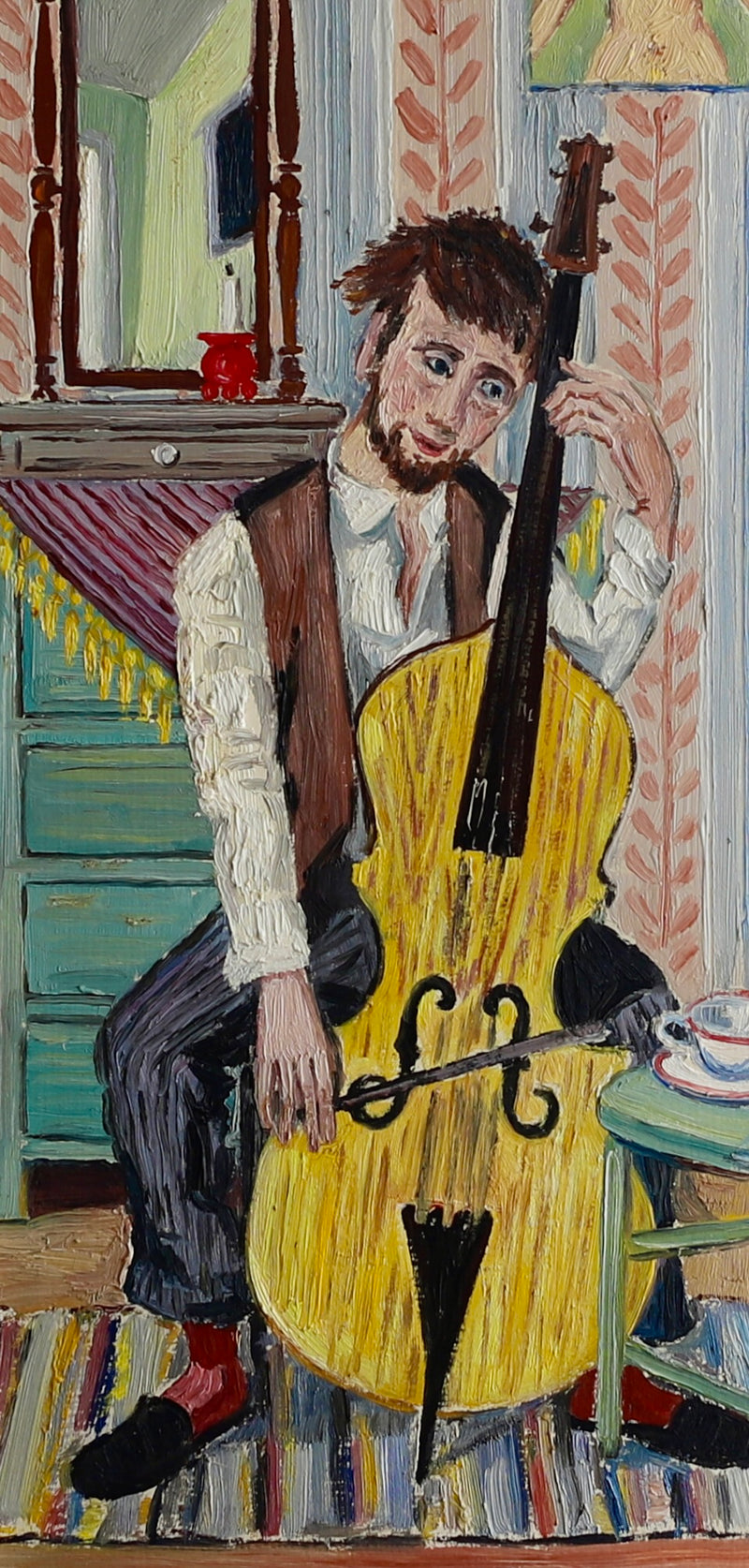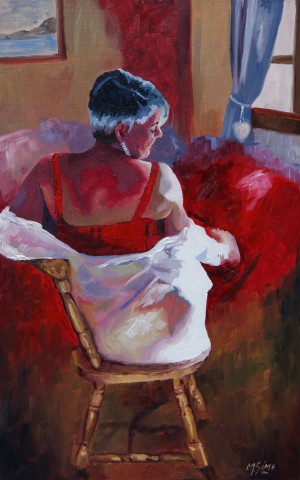Discovering Iconic Artists and Their Influences on Figurative Oil Painting
Discovering Iconic Artists and Their Influences on Figurative Oil Painting
Blog Article
The Advancement of Metaphorical Oil Paint: Comprehending Its Historical Significance and Modern Interpretations
The advancement of metaphorical oil painting functions as a compelling lens whereby to take a look at the interplay between imaginative expression and historic context. From the precise naturalism of the Renaissance to the stirring power of the Baroque, each age has added layers of significance and technique to this classic tool. Contemporary artists, attracting from this rich heritage, are now reinterpreting the human number in manner ins which test standard narratives. As we discover these improvements, one should consider just how the dialogue in between past and present informs not just creative practice yet additionally societal representations in a significantly complicated world.
Beginnings of Metaphorical Oil Painting
The origins of metaphorical oil paint can be traced back to the very early Renaissance in Europe, specifically in the 15th century. The development of oil paint enabled for better depth of shade and detail, boosting the realism and vibrancy of their work.

In this transformative era, figures were frequently portrayed within contextually rich atmospheres, showcasing not just their physical qualities yet additionally their emotional states. Leaders such as Jan van Eyck and Titian used the tool's versatility, employing layering strategies to attain luminance and appearance. This technology facilitated the representation of intricate fabrics and the subtleties of skin tones, adding to the growth of portrait and narrative scenes.
Furthermore, the Renaissance focus on humanism cultivated an admiration for uniqueness, which subsequently affected artists to create more dynamic and relatable figures - figurative oil painting. As an outcome, figurative oil paint became an effective car for narration and psychological engagement, laying the foundation for future artistic movements and designs
Secret Historic Movements
Considerable historical activities have shaped the development of metaphorical oil painting, each contributing one-of-a-kind ideologies and methods that increased the medium's opportunities. The Renaissance noted a zero hour, emphasizing realistic look and the human form, with musicians like Leonardo da Vinci and Michelangelo pushing the limits of anatomical precision and perspective. Following this, the Baroque age brought significant contrasts of light and shadow, exhibited by Caravaggio, who infused religious themes with intense emotionality.
The 19th century introduced Romanticism and Realistic look, where artists such as Delacroix and Courbet challenged timeless suitables, focusing on specific expression and day-to-day life. The advent of Impressionism even more changed the medium by stressing the effects of light and color, bring about a departure from typical representation.
In the very early 20th century, movements like Expressionism and Cubism redefined metaphorical paint with abstraction and the expedition of psychological depth. Each of these movements not just showed the social modifications of their times however also laid the groundwork for modern interpretations. The interplay between these historic movements has actually developed an abundant tapestry of ideologies and styles, affecting modern-day musicians in their search of capturing the human experience on canvas.
Strategies and Products Advancement

Throughout the Baroque duration, methods such as chiaroscuro and sfumato arised, boosting the psychological vibration of figurative compositions. Artists started to trying out glazes and impasto, controling appearance and luminosity. By the 19th century, innovations like the use of pre-mixed paints in tubes reinvented access, allowing artists to repaint en plein air and record the short websites lived impacts of light.
The 20th century saw the intro of synthetic pigments and mediums, which broadened the palette and modified the consistency of oil paints. The exploration of brand-new application strategies, such as palette knives and brushes of differing tightness, further varied creative expression. Collectively, these advancements reflect the developing partnership in between products, strategies, and the creative vision intrinsic in figurative oil paint.

Contemporary Interpretations
Contemporary interpretations of metaphorical oil painting show a vibrant discussion between custom and innovation, where musicians challenge established standards and check out varied themes. This development shows up in numerous means, as contemporary artists mix classic techniques with modern ideas, commonly dealing with social, political, and individual narratives.
Many experts attract motivation from historic jobs, yet they infuse their items with modern perspectives, using the human kind as an automobile for discourse on sex, identification, and culture. Artists significantly experiment with abstraction, distortion, and mixed media, which enables for a more comprehensive analysis of the number and its context.
Additionally, using dazzling shade palettes and unconventional structures typically offers to interfere with typical watching experiences, prompting crucial involvement from audiences. This change in focus expands beyond aesthetic appeals; it shows an expanding awareness of the complexities of human experience in an interconnected globe.
As metaphorical oil painting proceeds to advance, it continues to be an essential tool for discovering the subtleties of contemporary life, personifying both a regard for heritage and a commitment to modern idea. The result is a rich tapestry of expression that reverberates with the complexities of the modern-day human problem.
Influence On Modern Art
The effect of figurative oil painting on modern-day art is extensive, as it has constantly motivated a myriad of imaginative movements and methods throughout the 21st and 20th centuries. From Expressionism to Surrealism and past, the exploration of the human figure has important site actually stayed a central theme, allowing musicians to convey complicated emotions and stories. This focus on figurative depiction has led to a re-examination of conventional techniques, causing cutting-edge methods that mix realism with abstraction.
Moreover, contemporary artists have actually welcomed figurative oil paint as a method to resolve political and social problems, using the tool to challenge perceptions of sex, identification, and culture. The revival of passion in metaphorical work in recent years shows a hoping for link in a progressively digital globe, where human experience and emotion are paramount.
In addition, the dialogue between metaphorical oil painting and modern-day art is obvious in the jobs of artists such as Kehinde Wiley and Jenny Saville, that attract on historical recommendations while infusing their pieces with contemporary significance. Inevitably, figurative oil painting remains to shape and redefine contemporary artistic expression, highlighting its long-lasting significance in the art world.
Final Thought
The development of figurative oil paint underscores its historical importance and versatility throughout numerous imaginative movements. From the naturalism of the Renaissance to the stirring expressions of the Baroque and the innovative strategies of modernity, this medium has continuously transformed. Contemporary analyses reflect lively colors and non-traditional compositions, fostering crucial interaction with political and social motifs. Ultimately, figurative oil paint remains an essential tool for exploring the human experience, resonating greatly in today's electronic landscape.
The evolution of metaphorical oil paint offers as an engaging lens via which to check out the interaction between creative expression and historical context.Significant historical activities have formed the advancement of metaphorical oil painting, each contributing unique ideologies and strategies that broadened the tool's opportunities.As historical activities formed the trajectory of metaphorical oil paint, the materials and methods used by artists have actually also gone through substantial improvements. figurative oil painting.The influence of figurative oil paint on modern art is profound, as it has actually continuously motivated a myriad of creative movements and techniques throughout the 21st and 20th centuries.The development of figurative oil painting emphasizes its historical significance and flexibility throughout different artistic movements
Report this page